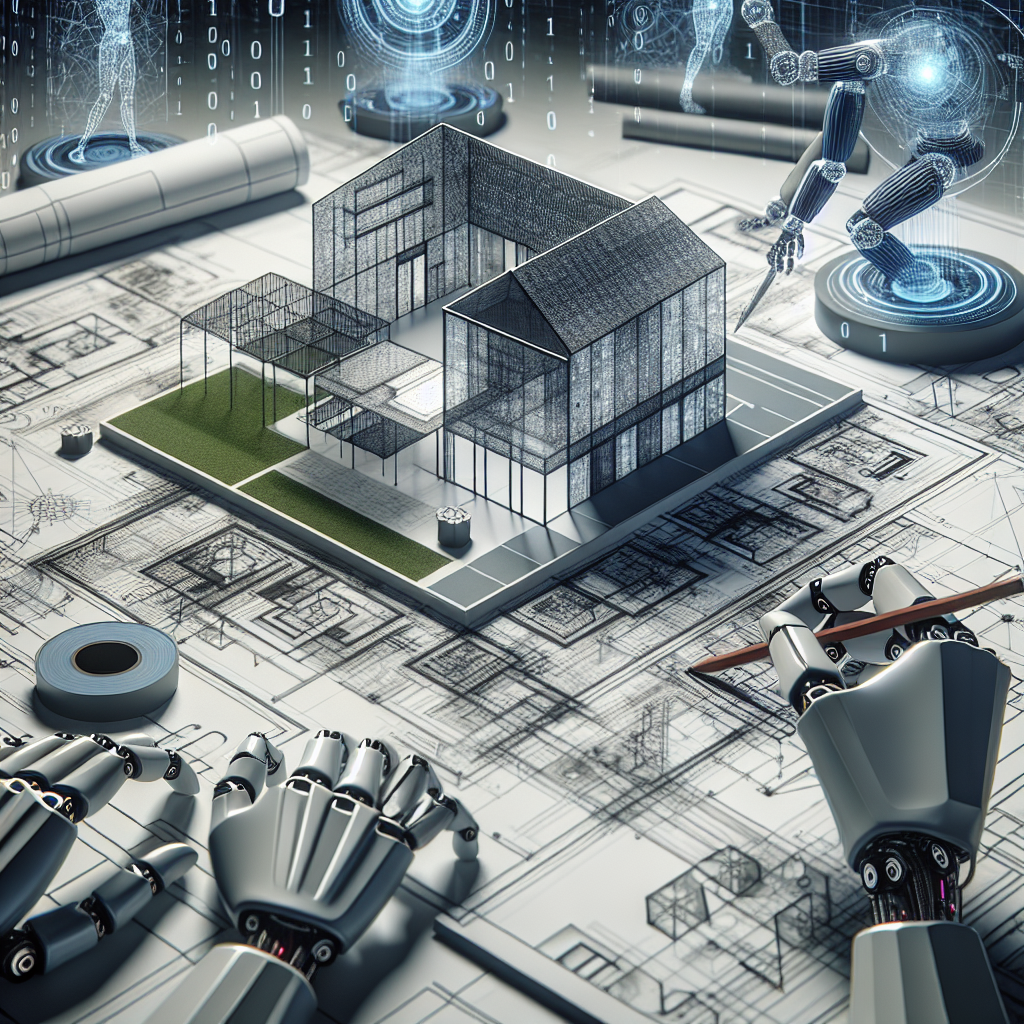Artificial intelligence (AI) has become an increasingly prevalent and powerful tool in various industries, including architectural design. AI technologies are revolutionizing the way architects work, allowing them to create more innovative and efficient designs. From generating design ideas to optimizing building performance, AI is changing the way buildings are conceived, designed, and constructed.
One of the most significant ways AI is influencing architectural design is through the use of generative design algorithms. These algorithms allow architects to input parameters such as building site, functional requirements, and material constraints, and then generate thousands of design options that meet those criteria. This process can significantly speed up the design process and enable architects to explore a wider range of design possibilities. By leveraging AI, architects can create more efficient and sustainable buildings that are tailored to the specific needs of their clients.
AI is also being used to optimize building performance. Through the use of simulation software and machine learning algorithms, architects can analyze how different design choices will impact energy efficiency, daylighting, and thermal comfort in a building. This allows architects to make informed decisions about building design that can reduce energy consumption and improve occupant comfort. By using AI to optimize building performance, architects can create buildings that are not only aesthetically pleasing but also environmentally friendly and cost-effective.
In addition to generative design and performance optimization, AI is also being used to streamline the construction process. AI technologies can be used to analyze construction schedules, identify potential conflicts or delays, and optimize resource allocation. By using AI to improve construction planning and coordination, architects can ensure that projects are completed on time and within budget. This can help to reduce construction costs and improve the overall efficiency of the building process.
Despite the numerous benefits of AI in architectural design, there are also challenges and limitations to consider. One of the main concerns is the potential for bias in AI algorithms. If the data used to train AI models is biased or incomplete, it can lead to biased design recommendations. Architects need to be aware of these limitations and carefully consider the data inputs and assumptions used in AI algorithms to ensure that the designs they create are fair and equitable.
Another challenge is the learning curve associated with adopting AI technologies. Architects may need to invest time and resources in learning how to use AI tools effectively, which can be a barrier to adoption for some firms. Additionally, there may be resistance from traditionalists in the industry who are hesitant to embrace new technologies. Overcoming these challenges will require a commitment to ongoing training and education, as well as a willingness to experiment with new tools and approaches.
Despite these challenges, the potential of AI in architectural design is vast. By leveraging the power of AI, architects can create more innovative, efficient, and sustainable designs that meet the complex needs of modern society. As AI technologies continue to evolve, architects will have access to increasingly powerful tools that will enable them to push the boundaries of design creativity and efficiency.
FAQs:
Q: How is AI being used in architectural design?
A: AI is being used in architectural design in a variety of ways, including generative design, performance optimization, and construction planning. AI algorithms can generate design options, analyze building performance, and optimize construction schedules to improve the efficiency and sustainability of building projects.
Q: Are there any limitations to using AI in architectural design?
A: One of the main limitations of using AI in architectural design is the potential for bias in AI algorithms. Architects need to carefully consider the data inputs and assumptions used in AI models to ensure that the designs they create are fair and equitable. Additionally, there may be a learning curve associated with adopting AI technologies, as well as resistance from traditionalists in the industry.
Q: How can architects overcome the challenges of using AI in architectural design?
A: Architects can overcome the challenges of using AI in architectural design by investing in ongoing training and education, experimenting with new tools and approaches, and being mindful of potential biases in AI algorithms. By staying informed and open to new technologies, architects can harness the power of AI to create more innovative and sustainable designs.

